Rolled or poured, stretched or dipped, fondant comes in many forms and has a variety of uses. It’s hard to keep track of everything available to you and all the ways to use it. If you’re new to the world of fondant (or if you just can’t remember of all your options!) pin the image below or bookmark this list for future reference — you’ll be glad you did!
Get to know the different types of fondant, including pros and cons for each type
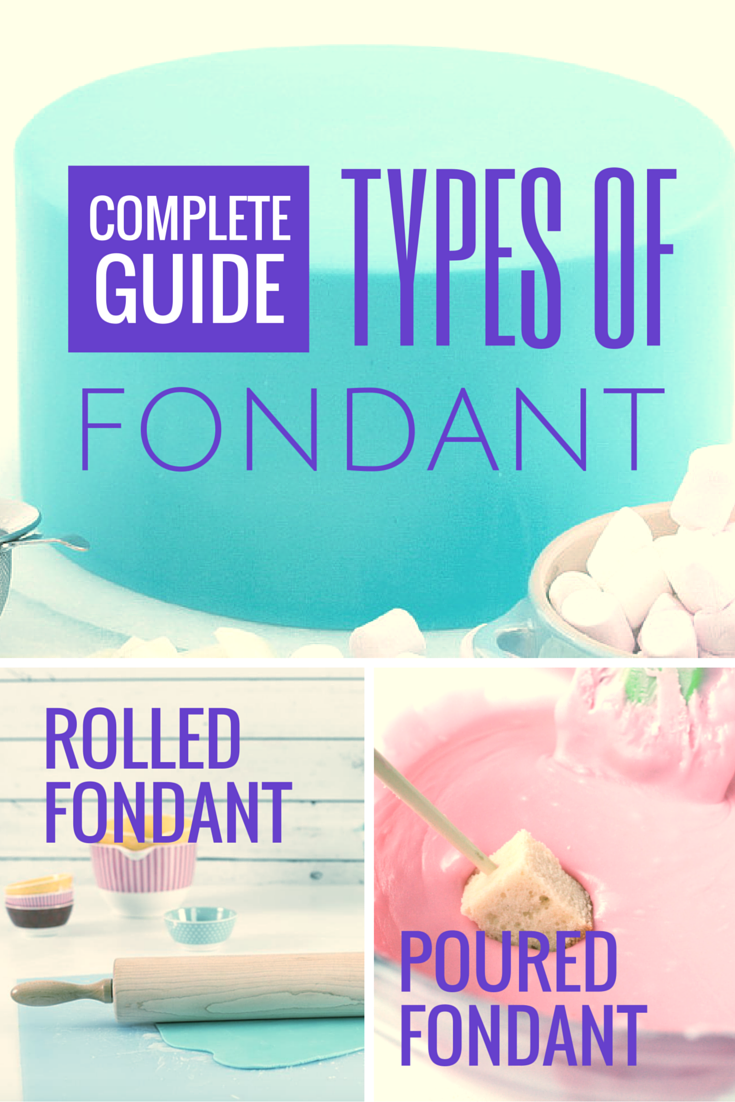
Rolled fondant
Rolled fondant
has become the covering of choice for many cake decorators. Working with rolled fondant comes with a bit of a learning curve, but once mastered it can be sculpted and molded into an endless number of shapes, textures and designs. Within the world of rolled fondant there are a few options, each with its pros and cons.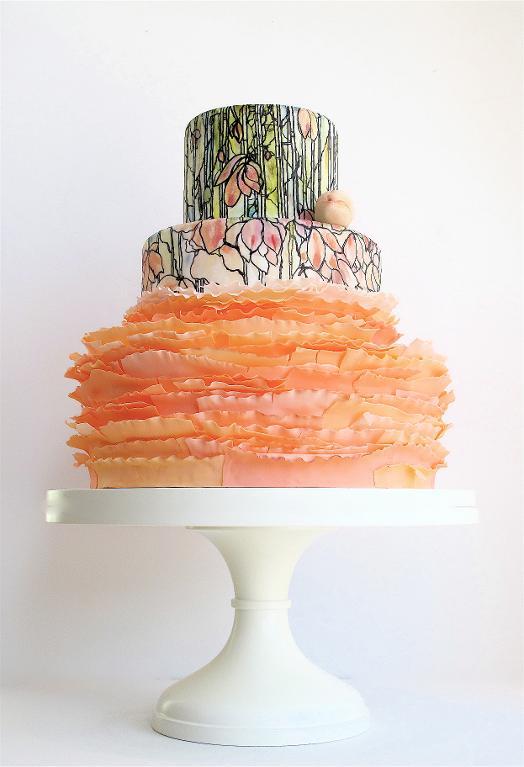
Image via Maggie Austin
Traditional rolled fondant
Traditional commercial rolled fondant varies from manufacturer to manufacturer, but typically contains some combination of sugar, oil, glycerine, corn syrup and stabilizing gums or gelatin.
Pros
Store-bought fondant can be rolled to cover a cake or sculpted into shapes or figures. It dries firm but sliceable, with a matte finish. It can be flavored with the addition of oils or extracts. Traditional rolled fondant is easy to color and lasts for many months stored in an airtight container at room temperature.
Cons
Fondant recipes vary by maker and each has its quirks. Learning which brand is best for you can be time consuming and pricey. Bluprint Instructor Lesley Wright breaks down her take on each fondant brand here: “The Good, the Bad and the Tasty: A Comparison of Fondant Brands.”
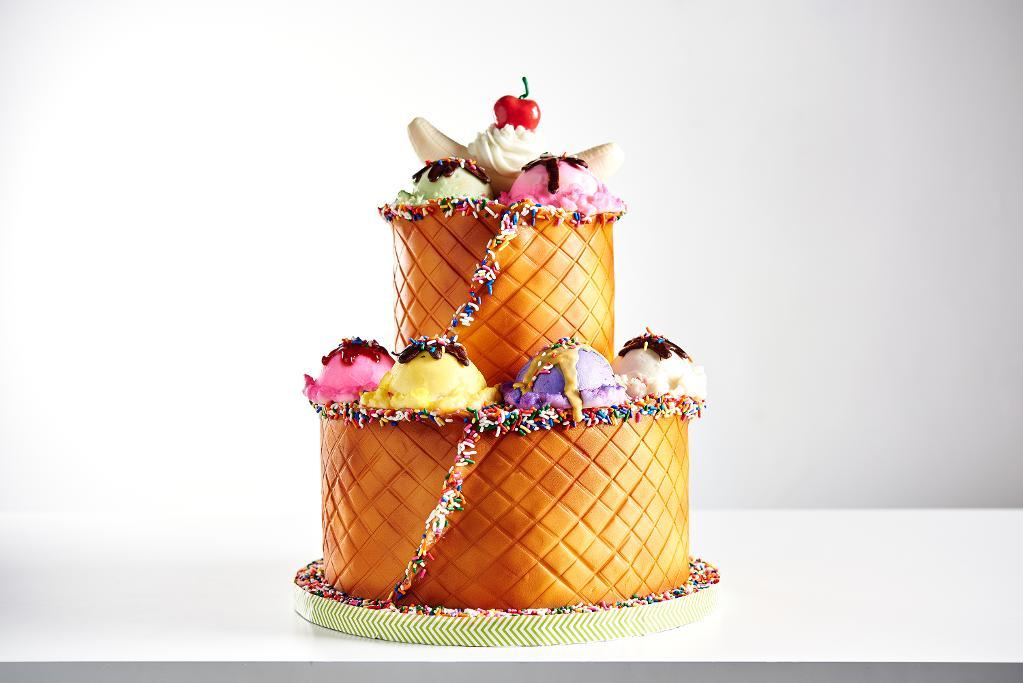
Image via Shawna McGreevy
Chocolate-based rolled fondant
Whether store-bought or homemade, the ingredients in chocolate fondant are similar to those found in traditional fondant with the addition of white or dark chocolate. Chocolate adds both flavor and elasticity to the fondant.
Pros
It’s typically a little more forgiving, tearing and creasing less than traditional fondant.
Cons
Chocolate fondant needs to be tinted with oil-based candy colors and flavored with oil-based flavorings, which can be a little more difficult to find. It’s more perishable than traditional fondant, but still lasts for a few months stored in an airtight container at room temperature.
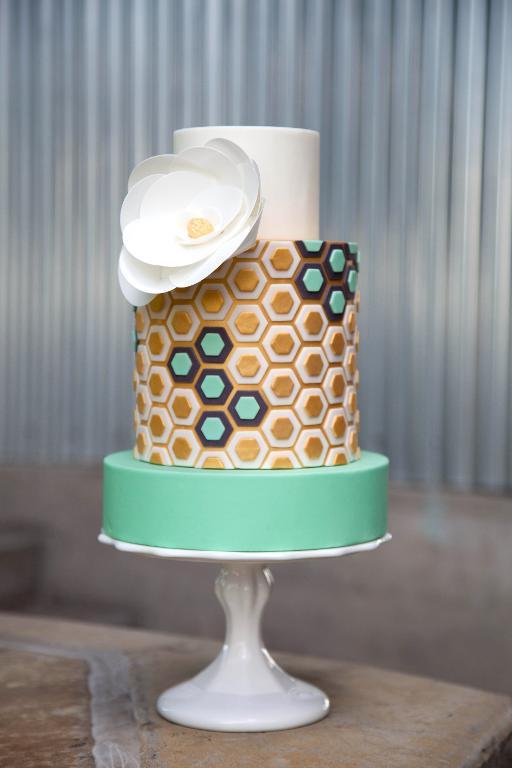
Image via Jessica Harris
Homemade marshmallow fondant (aka MMF)
Homemade fondant is made by combining melted marshmallows with confectioners sugar, water and shortening. Get Bluprint instructor Jessica Harris’s foolproof MMF recipe, or watch this simple visual recipe video. Some decorators add some store-bought fondant to their MMF recipes to add elasticity and shelf life.
Pros
It’s quick, easy and inexpensive to make and possesses many of the same positive qualities as traditional commercially made fondants.
Cons
Homemade fondant has a shorter shelf life than the store-bought variety. It can take a few tries to get the fondant to the perfect consistency. Outcomes can vary depending on the brand of marshmallows used and the humidity where you live.
Poured fondant
Poured fondant is a classic glaze used to coat cakes and candies with a sleek, glossy, crunchy, sugary shell. Some recipes call for breaking out the candy thermometer, others are a simple mix of just a few ingredients. Poured fondant is the traditional finish for petit fours and also makes for a silky smooth candy filling. There are a few types of poured fondant, all detailed below.
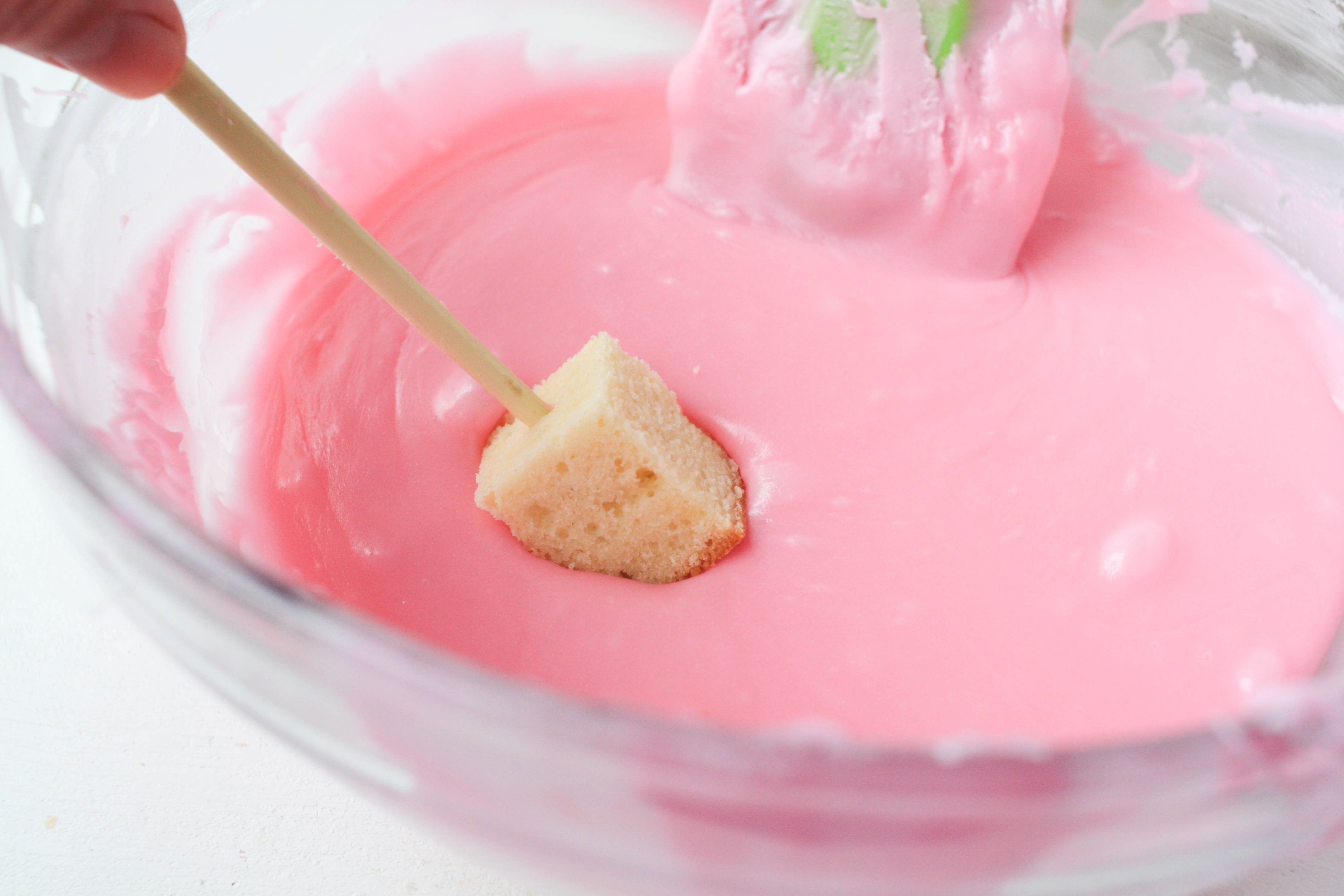 Image via Erin Bakes.
Image via Erin Bakes.
Cooked poured fondant
The most traditional recipes for poured fondant are ones made of sugar and water that’s cooked to the softball stage and then whipped until glossy.
Pros
It can be tinted with water-based food colorings and flavored with the addition of oils or extracts. Cooked fondant recipes can be made in advance and re-warmed to a pourable consistency when needed. Unused fondant can be stored in the refrigerator in an airtight container for up to three days.
Cons
Using a candy thermometer and working with hot sugar can take time to master and may be intimidating to some.
 Image via Erin Bakes
Image via Erin Bakes
Quick poured fondant
This icing is typically a combination of powdered sugar, corn syrup, water and a flavoring, whipped together with a stand or hand-mixer. It sometimes contains white chocolate or candy coating for additional flavor and color.
Pros
Comes together in a flash with a few inexpensive ingredients. Easy to color, flavor and re-warm as needed.
Cons
A smidge less refined than its cooked cousin. Because the sugar is beaten and not cooked, there can be a little more texture to this version.
Candy filling
Either cooked or quick fondant recipes can be used as candy fillings. If using a cooked fondant, make sure it cools to room temperature before handling. Fondant candy fillings can be flavored with extracts, oils, jam, nuts and more. Classic chocolate-covered cherries are made by wrapping cherries in fondant before dipping them in chocolate. The sugar from the fondant breaks down the cherry and creates a juicy, sweet filling. Making your own fondant-filled candies with my recipe and tutorial.
 Image via Erin Bakes
Image via Erin Bakes

Thanks craftsyI got to learn a lot from this page.
love this page